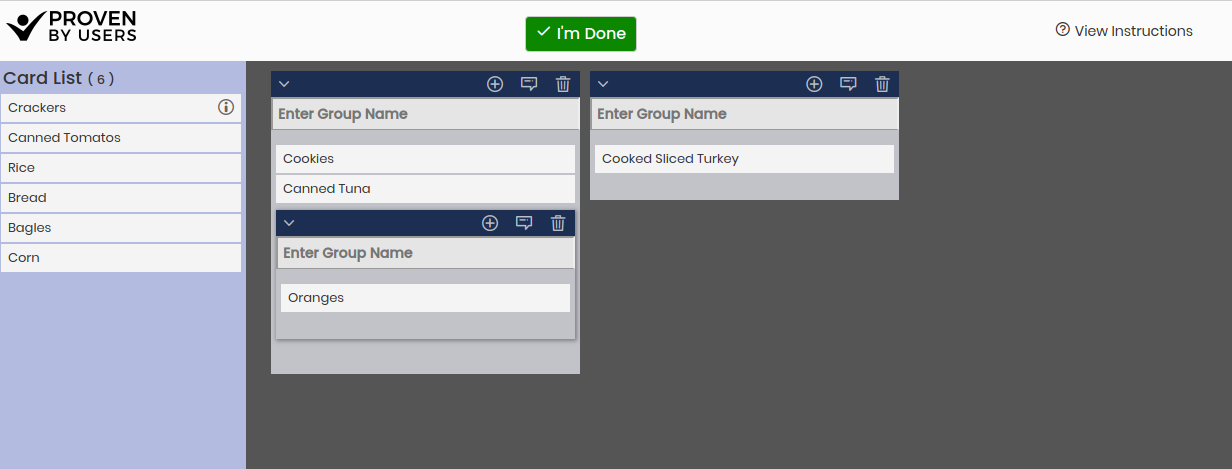An Introduction to Card Sorting
What Is Card Sorting?
Card Sorting is a user-centered research method used to help determine how people categorize a set of items - referred to as 'cards' - to increase the users ability to find them. The technique can be used to determine both the naming of the categories and the grouping of the items within the categories. The most frequent use of Card Sorting is to establish an information architecture(IA) or navigation of a website.
Why Do a Card Sort?
Card Sorting can provide valuable insight on how a set of target users structure the content on a website. Among other things card sorting can:
- Identify the mental model of users and how they intuitively want to name and categorize the content on a website.
- Identify differences in the naming or structure by different user groups. (perhaps by age, or job function)
- Determine gaps in knowledge about areas of content within certain user groups.

Which Card Sort type should I use?
Let's outline the 3 types and when you might use each one:
-
Open
In this type of card sort, participants create and name their own groups. Like the other types, the open card sort discovers how people group the cards into categories - how they structure the information. Additionally this type of card sort uncovers the terms people use.
When to use it: An open card sort is a very exploratory exercise. It is best used to discover the mental modal that users have of both the data and the terms they use to describe the information. -
Closed
In a closed card sort, participants are provided the group names and they choose which of the pre-determined groups to place each of the cards into.
When to use it: A closed sort is good to use when there is confidence with the grouping and naming. The focus on this test is around which cards are in what groups. This is often done as a validation of the results of an open card sort. -
Hybrid
As you might expect, the hybrid card sort is a combination of the open and closed sort types. In the hybrid, you create the categories, but the participant is allowed to modify the groups - adding, deleting or renaming them.
When to use it: A hybrid card sort is useful when there is confidence in the number and naming of the categories, but there is a desire to see where participants have a need to deviate from the pre-determined groupings.
How many cards should I have?
A few considerations should be taken to determine how many cards.
- How much time you want the test to take. While it depends on the complexity of your cards, and the type of sort you are performing, a rough estimate is that 1-3 cards can be sorted in a minute. Keep in mind, this is just for the card sorting portion of the test - it doesn't include any survey, and larger tests do tend to take longer.
- The confidence in the results. It is frequently believed that the longer the test takes, the more burned out the participants become and the less effort they take to accurately categorize the cards. This can undermine the accuracy of the test.
- The size of the testing screen. While Proven By Users allows the participant to expand and collapse groups, and move groups around the screen, participants who are using smaller screens will need to actively manage the groups in large card sorts.
How many participants should I test with?
For this answer we will rely on the top experts in the research field:
- Tullis and Wood recommend testing with 20–30 participants
- Jakob Nielsen recommends testing with 15 participants
These are great articles to read, and while exceptions to these recommendations exist ( ex: when not showing all users all the cards ) testing between 15-30 participants for your card sort covers most situations.
Learn more
- Check out our Card Sorting Features
- Card Sorting - usability.gov
- Card Sorting: Uncover Users' Mental Models for Better Information Architecture - Nielsen Norman Group
Next Steps
- Learn how to setup your card sorting test
- Build your Card Sort in our Demo
- Register for Free Now (no credit card required)
